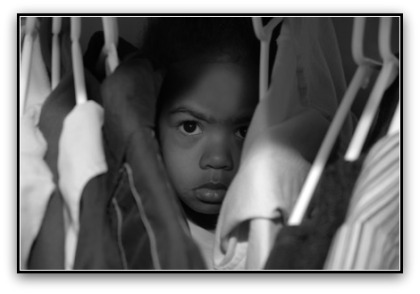
Heart-wrenching acts of physical, emotional, and sexual child abuse seem unimaginable to most, yet millions of children each year suffer countless acts of abuse, sending child advocates, policymakers, and public health researchers searching for causes and cures.
What most researchers and studies find is not one underlying cause or reason for abuse against children, but a number of social conditions that place multiple stressors on parents and caregivers. Underlying, untreated mental illness in perpetrators also contributes to abuse. For more information see child abuse.
For children of military personnel, an unusual number of these stressors stack up to create a dangerous mix of circumstances. Eight years of war, parents deploying multiple times to combat zones, and stress on a family’s finances, in addition to situations of divorce, physical disability, trauma, and death can leave service members and their spouses emotionally damaged and dysfunctional.
“If the burden sounds heavier than what families bore in the longest wars of the 20th Century – World War II and Vietnam – that’s because it is, at least in some ways,” according to the 2008 AP article “As Wars Lengthen, Toll On Military Families Mounts,” by David Crary.
“What makes today’s wars distinctive is the deployment pattern – two, three, sometimes four overseas stints of 12 or 15 months. In the past, that kind of schedule was virtually unheard of,” according to Crary’s article.
Troops come home for a rest and instead are faced with a family barely managing. Within weeks, the family again sees a service member leave, and the spouse returns to fighting another kind of war – one of trying to manage home, kids, and job – with little or no support.
A 2007 study released by the Pentagon stated that mother’s left behind to care for children on their own had a greater propensity to commit abuse.
And the warriors who return home with combat trauma, perhaps exacerbated by untreated mental illness, can become dangerous.
Crary’s article cites some tragic incidents: a former Army paratrooper from Michigan charged with raping and beating his infant daughter; an Army National Guard sergeant from Hawaii accused of murdering his 14-year-old son, who was trying to save his pregnant mother from his father’s violence; and a divorced airman who chased his ex-wife out of her military housing, before killing himself and his two children at the Tinker Air Force Base in Oklahoma.
In re-deployment situations, divorce rises as military couples, spending extended time apart, become lonely. Infidelity occurs on both sides, for the service member overseas, and for the spouse left at home. These stressors can contribute to acts of violence and abuse by one or both partners in a military household.
Definitions of childhood abuse include, at a minimum, any act or failure on the part of a parent or caretaker which results in neglect, death, serious physical or emotional harm, sexual abuse or exploitation.
Neglect, defined as the failure by caregivers to provide for a child’s basic physical, educational, or emotional needs, accounts for 59% of all childhood victims, according to the U.S. Department of Health and Human Services (HHS), Administration for Children & Families. Physical abuse, accounts for 10.8% of childhood abuse, characterized by injurious acts like punching, beating, kicking, biting, shaking, burning, or otherwise harming a child.
Psychological maltreatment accounts for 4.2% of childhood abuse, according to HHS. Because it’s harm done to the “inside” of a child, this is one of the hardest types of abuse to measure, and many believe overall numbers are understated. Emotional abuse occurs from words, actions, and indifference, such as abusers rejecting, ignoring, belittling, dominating, and criticizing victims.
Sexual abuse, accounting for 7.6% of all child abuse cases, includes activities by a parent or caregiver such as fondling a child’s genitals, penetration, incest, rape, sodomy, indecent exposure, and exploitation through prostitution or the production of pornographic materials.
Most experts agree that because of shame and guilt, most sexual abuse victims do not seek help, severely underestimating the true number of cases.
Children who are sexually abused are more likely to be abusers themselves, and the psychological distress caused by this type of abuse is extensive. PTSD, anxiety, depression, borderline personality disorder, confused sexual identity, paranoia, and dissociation are just a sampling of the outcomes linked to sexual abuse.
Child abuse is never acceptable, yet knowing that certain conditions and stressors associated with military life potentially place children in harm inform those in the military to design child abuse prevention and intervention programs, and counsel those in these horrific situations.
The military’s Family Advocacy Program located on all bases and installations has prevention, identification, intervention, and treatment programs to help suspected victims and alleged perpetrators. Military OneSource.com is another source for those, not close to a base, to seek and receive help. In addition, numerous community and national organizations, such Prevent Child Abuse America, have experts on staff to help child abuse victims, directing them to counseling and other community resources.
Many opportunities exist for those working in the mental health field with military personnel and their families, specifically with child abuse victims. Most of these positions require a background in psychology. Get started today by requesting information from schools offering psychology degree programs and learn more about career options in this field.